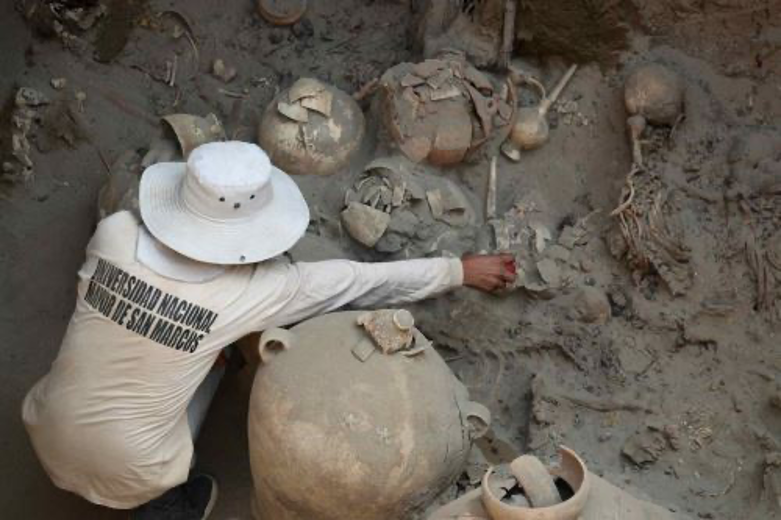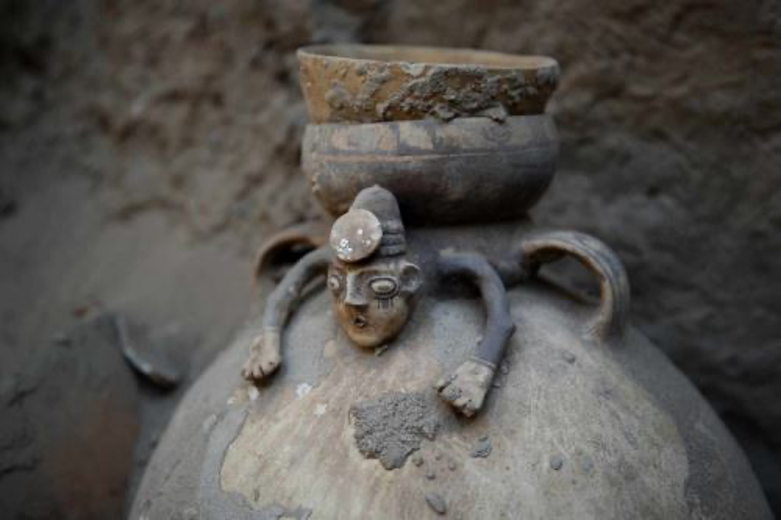
Peruvian archaeologists have discovered the tomb of an elite figure with close ties to the sea who was a member of the Chancay Culture —a pre-Incan civilization that developed between 1,100-1,400 CE on what is today the Andean nation’s central coast.
The tomb is the largest discovered to date at the Macaton cemetery, an extensive burial site located in a river valley in the coastal province of Huaral —roughly two hours from Lima by car.
The tomb —which is six meters (20 feet) deep, seven meters long, and seven meters wide— contains the remains of an individual protected by a large funeral bundle and accompanied by five other individuals, who may have been sacrificed family members, children, and servants, the archaeologists specified.

“Given the characteristics of the tomb, its dimension, and the work that went in to building it, this has been a personage of the Chancay Culture,” said Dr. Pieter Van Dalen Luna, leader of the team of archaeologists from Lima’s National University of San Marcos that is excavating the burial site.
Along with the skeletons of those six human beings, the remains of four llamas that certainly had been sacrificed in honor of the deceased also were found.
The tomb furthermore is home a large variety of nearly 25 ceramic vessels that contained offerings —mainly of food— to accompany the deceased man in his journey to the afterlife.
Numerous questions still remain though about this new discovery, with archaeologists awaiting test results on the human remains to determine those people’s gender, age, and potential illnesses.
They believe, however, that the main personage “would have been a person dedicated to marine activity, perhaps to fishing or shellfish gathering,” Van Dalen said.
That assumption is based on the presence of a wooden oar inside the tomb —an object not previously discovered during excavation work at any of the more than 80 graves at Macaton dating back to 2018.

During the time of the Chancay Culture, that funerary site was divided into family parcels and was a place members of society visited regularly to pay homage to their ancestors, the archaeologist said.
That culture experienced a steady decline throughout the 15th century, a downturn that coincided with the expansion of the Inca empire, also known as Tahuantinsuyo.
A human settlement now surrounds the centuries-old cemetery, which researchers think contains more vestiges of the Chancay Culture that are awaiting discovery.
In fact, the elite individual’s tomb lies just 50 meters (165 feet) from a group of modest houses, and archaeologists believe that other tombs “almost surely” lie underneath those homes.
Although these residences occupy a portion of the archaeological zone, their presence also has served to keep away “huaqueros” (looters of archaeological sites), Van Dalen said.
The expert lamented that the Macaton site has been “intensively looted” over time, but he said the community’s presence has helped to “safeguard and protect it.”